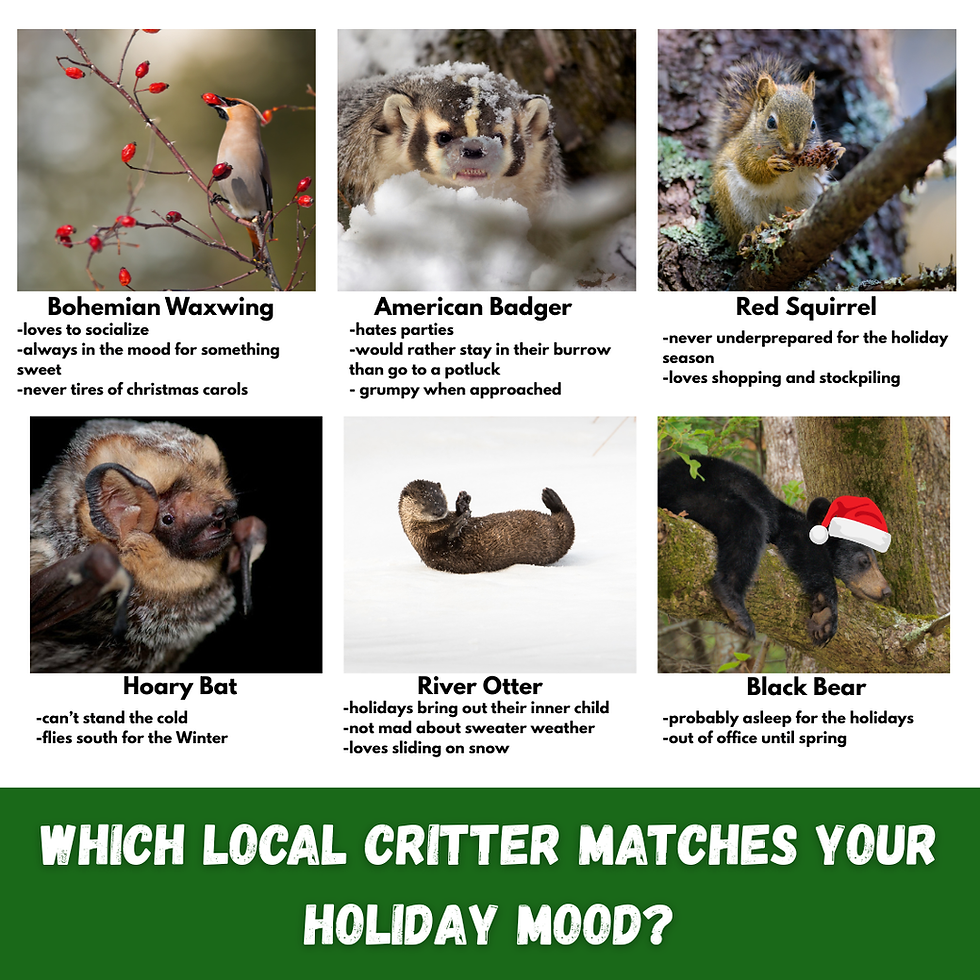Topsy-turvy nuthatches
- osstewardship
- Jan 5, 2024
- 1 min read

No, we didn't accidentally upload this photo upside down! This is how nuthatches forage for insects - by going head first down a tree. How do they manage this without falling to the ground?
Most songbirds have 4 toes, three forward facing and one backwards-facing, that balance them and give them grip when walking along branches. Nuthatches, like the White-breasted Nuthatch here, have a curved and extra-long backwards-facing toe that also has an extra-long and extra-strong claw on it. The toe and claw act as an anchor and support the weight of the nuthatch enough that it can creep down a tree trunk without risking a fall. They are still able to walk up the tree if needed, but show a strong preference for going to top to bottom.
Biologists think that nuthatches evolved this fancy foraging ability in order to get a different vantage point of the tree (and therefore an advantage) to other birds. Think of it like this: if all of your competitors are looking UP into the tree and bark crevices, by looking downwards you might be able to see (and eat) some extra sneaky insects that the others missed and thus get a bigger lunch!
Want to learn more about local birds and how to identify them? Check out our Beginner Birding webinar series!







Comments